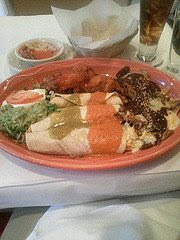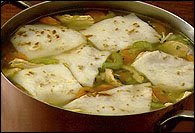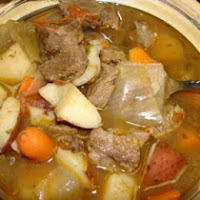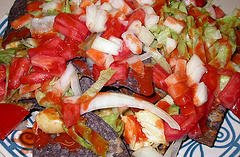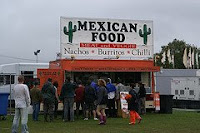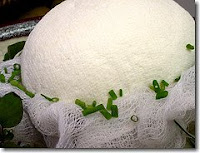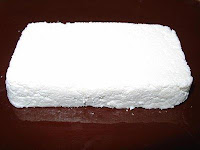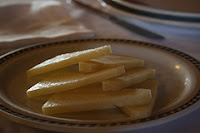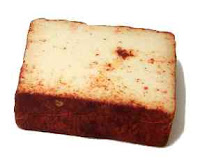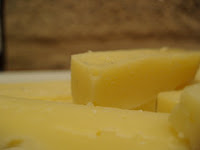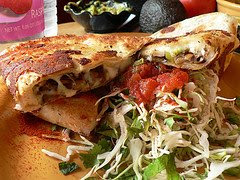Snacks are a very important part of the meal structure in Mexican cuisine, it’s that meal time when the entire family gets together and spend time. The taste of Mexican Snacks is quite well-known all over the world. Here are a few snacks from the Mexican cuisine snacks menu.
1)Margaritas
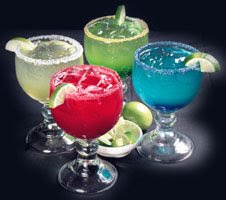
Margarita’s another very famous appetizer from the cuisine of Mexico, for making a perfect margarita there is no individual recipe, connoingsseurs around the world agree to the fact that there are 3 key ingredients which belong in every frosty salt-rimmed glass: they are
a)Tequila
b)orange liqueur
c)lime juice.
The tequila is taken up first, and a moderately-priced bottle is chosen for. Premium brands are not lucked up to because the superior flavor will be covered up by other ingredients. Orange liqueur is the next to go and there are various kinds you can use, from the more straightforward sweetness of triple sec or curacao to the rich complexity of Cointreau or Grand Marnier. The sweetness in a margarita comes from the orange liqueur. Now it’s the time for the lime juice, adding limes creates difference in taste. Time can be saved and mess at your fiesta, mix up your tequila, orange liqueur and lime juice in a big pitcher beforehand. When you're ready to make a batch of margaritas, just pour some of your magical mix over ice and blend or shake!
2)Salsas

It’s a famous appetizer and at the same time its quite easy to make your own salsa. It's not difficult to do so, it becomes much fun if one has tasted the homemade salsa, you may never want store-bought again! Fresh home made salsa contains tomatoes, chilies, onions, garlic, cilantro, lime juice or vinegar, and salt. Tomatoes can be chopped; cored or cut. Core them and cut them into quarters, use a food processor in order to puree the tomatoes to the desired consistency. Roma tomatoes are generally used for a drier chunkier salsa whereas round tomatoes are taken up for a juicier salsa
Types of tomatoes to be used for making different salsas
Roma tomatoes for a drier, chunkier salsa and round tomatoes for a juicier salsa.
White onions; they taste better than yellow ones for eating raw.
Try some variations: replace the tomatoes with diced mangoes, cucumbers or tomatillos.
Try adding fresh, raw corn or a can of drained and rinsed black beans to your salsa.
Adjust the heat in your salsa by switching the kind of peppers you use. Anaheims are
Mild poblanos are a bit hotter, jalapenos a bit hotter still; serranos are even hotter, and habaneros will set your mouth on fire!
3) Fajitas

Fajitas have a mixed Mexican-American heritage. They were first made by Mexican and Texan cowboys, who developed this signature method for grilling the rations of skirt steak they received for the trail, although nowadays it's just as common to make fajitas with chicken, seafood or even tofu. There are two factors that give fajitas their distinctive flavor: the marinade and the cooking method. Fajita marinade always contains lime juice and garlic, and often onion, cilantro, oregano cumin, chiles and sometimes tequila. When it comes to cooking fajita meat, there's just no substitute for grilling. If you are using skirt steak, pound it thin, cook it no more than medium-rare and slice it across the grain for maximum tenderness. And don't forget -- no fajita feast is complete without sauteed onions and green peppers, pico de gallo, shredded cheese, guacamole, sour cream and a big pile of soft, warm flour tortillas.
4) Flan
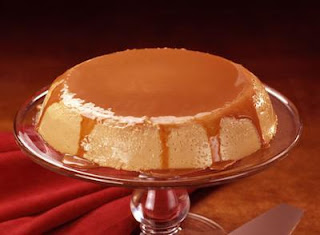
It’s a traditional Mexican dessert of creamy custard crowned with rich, toasty caramel looks complicated but is really uncomplex to make. In Many recipes call for individual custard cups, but if you don't have any you can just as easily use a pie pan and slice the flan into wedges for serving. Customize your flan recipe by replacing 1/4 cup of the milk with rum or your favorite liqueur, or try mixing in orange zest or shredded coconut. To provide gentle, even heat, flan recipes will ask you to bake the custard in a water bath -- a roasting pan full of water, in which you set the flan dishes. Bring the water to a boil before you pour it into the pan or it will take a very long time for the oven to heat it up. When it's done, the flan will be firm around the edges, but it will still be wobbly in the middle; the texture will even out as it cools.
Veggie Quesadillas is a very loveable snack in Mexico.
1)Margaritas

Margarita’s another very famous appetizer from the cuisine of Mexico, for making a perfect margarita there is no individual recipe, connoingsseurs around the world agree to the fact that there are 3 key ingredients which belong in every frosty salt-rimmed glass: they are
a)Tequila
b)orange liqueur
c)lime juice.
The tequila is taken up first, and a moderately-priced bottle is chosen for. Premium brands are not lucked up to because the superior flavor will be covered up by other ingredients. Orange liqueur is the next to go and there are various kinds you can use, from the more straightforward sweetness of triple sec or curacao to the rich complexity of Cointreau or Grand Marnier. The sweetness in a margarita comes from the orange liqueur. Now it’s the time for the lime juice, adding limes creates difference in taste. Time can be saved and mess at your fiesta, mix up your tequila, orange liqueur and lime juice in a big pitcher beforehand. When you're ready to make a batch of margaritas, just pour some of your magical mix over ice and blend or shake!
2)Salsas

It’s a famous appetizer and at the same time its quite easy to make your own salsa. It's not difficult to do so, it becomes much fun if one has tasted the homemade salsa, you may never want store-bought again! Fresh home made salsa contains tomatoes, chilies, onions, garlic, cilantro, lime juice or vinegar, and salt. Tomatoes can be chopped; cored or cut. Core them and cut them into quarters, use a food processor in order to puree the tomatoes to the desired consistency. Roma tomatoes are generally used for a drier chunkier salsa whereas round tomatoes are taken up for a juicier salsa
Types of tomatoes to be used for making different salsas
Roma tomatoes for a drier, chunkier salsa and round tomatoes for a juicier salsa.
White onions; they taste better than yellow ones for eating raw.
Try some variations: replace the tomatoes with diced mangoes, cucumbers or tomatillos.
Try adding fresh, raw corn or a can of drained and rinsed black beans to your salsa.
Adjust the heat in your salsa by switching the kind of peppers you use. Anaheims are
Mild poblanos are a bit hotter, jalapenos a bit hotter still; serranos are even hotter, and habaneros will set your mouth on fire!
3) Fajitas

Fajitas have a mixed Mexican-American heritage. They were first made by Mexican and Texan cowboys, who developed this signature method for grilling the rations of skirt steak they received for the trail, although nowadays it's just as common to make fajitas with chicken, seafood or even tofu. There are two factors that give fajitas their distinctive flavor: the marinade and the cooking method. Fajita marinade always contains lime juice and garlic, and often onion, cilantro, oregano cumin, chiles and sometimes tequila. When it comes to cooking fajita meat, there's just no substitute for grilling. If you are using skirt steak, pound it thin, cook it no more than medium-rare and slice it across the grain for maximum tenderness. And don't forget -- no fajita feast is complete without sauteed onions and green peppers, pico de gallo, shredded cheese, guacamole, sour cream and a big pile of soft, warm flour tortillas.
4) Flan

It’s a traditional Mexican dessert of creamy custard crowned with rich, toasty caramel looks complicated but is really uncomplex to make. In Many recipes call for individual custard cups, but if you don't have any you can just as easily use a pie pan and slice the flan into wedges for serving. Customize your flan recipe by replacing 1/4 cup of the milk with rum or your favorite liqueur, or try mixing in orange zest or shredded coconut. To provide gentle, even heat, flan recipes will ask you to bake the custard in a water bath -- a roasting pan full of water, in which you set the flan dishes. Bring the water to a boil before you pour it into the pan or it will take a very long time for the oven to heat it up. When it's done, the flan will be firm around the edges, but it will still be wobbly in the middle; the texture will even out as it cools.
Veggie Quesadillas is a very loveable snack in Mexico.

